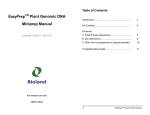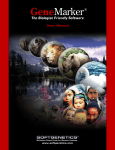Download Manual - Xcelris Genomics
Transcript
Plant gDNA Mini Kit User Guide Cat No: XG2611-01 XcelGen Ver.: 0.2/13 Revised Protocol Plant gDNA Mini Kit Table of Contents Introduction ............................................................................................................. 02 Overview ................................................................................................................... 02 Storage and Stability ............................................................................................. 02 Kit Contents .............................................................................................................. 03 Before Starting ........................................................................................................ 03 Plant gDNA Mini Kit Protocol .............................................................................. 04 A. Dry Specimens .............................................................................................. 04 B. Fresh/Frozen Specimens ............................................................................ 06 Vacuum/Spin Protocol .......................................................................................... 08 Troubleshooting Guide ........................................................................................ 09 Limited Use and Warranty ................................................................................... 10 01 Plant gDNA Mini Kit Introduction The Plant gDNA Kit is designed for efficient recovery of genomic DNA up to 60 kb in size from fresh and dried plant tissue samples. Up to 100 mg of wet tissue (or 30 mg dry tissue) can be processed in less than 1 hour. The system combines the reversible nucleic acid-binding properties of the matrix with the speed and versatility of spin column technology to eliminate polysaccharides, phenolic compounds, and enzyme inhibitors from plant tissue lysates. Purified DNA is suitable for PCR, restriction digestion, and hybridization techniques. There are no organic extractions thus reducing plastic waste and hands-on time to allow multiple samples to be processed in parallel. Overview If using the Plant gDNA Kit for the first time, please read this booklet to become familiar with the procedures. Samples are homogenized and lysed in a high salt buffer. The DNA is bound to the column while proteins and other impurities are removed by wash buffer. The purified DNA is suitable for downstream applications such as endonuclease digestion, thermal cycle amplification, and hybridization techniques. Storage and Stability All components of the Plant gDNA Kit are stable for at least 12 months when stored at 22oC-25oC. RNase A should be stored at 4oC.During shipment, or storage in cool ambient conditions, precipitates may form in Buffer P1 and Buffer P2. It is possible to dissolve such deposits by warming the solution at 55oC, though we have found that they do not interfere with overall performance. 02 Plant gDNA Mini Kit Kit Contents Product XG2611-00 XG2611-01 DNA Mini Columns 4 50 2 ml Collection Tubes 8 100 Buffer P1 5 ml 55 ml Buffer P2 0.9 ml 10 ml Buffer P3 2 ml 20 ml Buffer BL 1.8 ml 22 ml DNA Wash Buffer 2 ml 15 ml Elution Buffer 1 ml 15 ml RNase A 25 µl 270 µl 1 1 User Manual Before Starting Prepare all components and get all necessary materials ready by examining this instruction booklet and become familiar with each steps. Important Dilute Wash Buffer Concentrate with ethanol as follows and store at room temperature. Add 8ml (XG2611-00) or 60ml (XG2611-01) absolute (96%-100%) ethanol to each bottle. Choose the most appropriate protocol to follow. Procedures are described for each of dried and fresh (or frozen) specimens. A. Dry Specimens (Page 4) For processing 50 mg powdered tissue. DNA yields range from 10 g to 50 g per 100 mg dry tissue. B. Fresh/Frozen Specimens (Page 7) For processing 100 mg fresh (or frozen) tissue. DNA yield is similar to A. 03 Plant gDNA Mini Kit Plant gDNA Mini Kit Protocol A. Dry Specimens Materials supplied by user: Microcentrifuge capable of at least 13,000 rpm. Nuclease-free 1.5 ml and 2.0 ml centrifuge tubes. Waterbath equilibrated to 65oC. Equilibrate sterile water or Elution Buffer at 65oC. Absolute (96%-100%) ethanol. Optional: -mercaptoethanol. This is the most robust method for isolation of total cellular (mitochondrial, chloroplast, and genomic) DNA. Yields are usually sufficient for several tracks on a Southern blot for RFLP mapping. Drying allows storage of field specimens for prolonged periods of time prior to processing. Samples can be dried overnight in a 45oC oven, powdered, and stored dry at room temperature. To prepare dried samples, place 50 mg of dried tissue into a 2.0 ml centrifuge tube and grind using a pellet pestle. For critical work such as PCR and cloning, pestles are best used a single time then soaked in a dilute bleach solution immediately after use until clean. Disposable pestles may be autoclaved several times. For standard Southern analysis, the same pestle can be reused several times to grind multiple tissue samples by rinsing with ethanol and wiping the surface clean between samples. A fine powder will ensure optimal DNA extraction and yield. Process four to six tubes as a group till Step 2 and start another set. 1. To 10-50 mg powdered dry tissue, add 900 l Buffer P1 in a 2.0 ml centrifuge tube. Optional: Add 10 l -mercaptoethanol and vortex vigorously to mix. Make sure to disperse all clumps. Tip: Process in sets of four to six tubes: grind, add Buffer P1 and -mercaptoethanol, and proceed to Step 2 before starting another set. Initially, do not exceed 50 mg dried tissue. Amount can be increased according to results. 2. Incubate at 65oC for 15 min. Mix sample twice during incubation by inverting tube. Optional: If necessary, add 5 l of RNase A into the lysate and incubate at room temperature for 5 min before incubation at 65oC to remove the RNA. 04 Plant gDNA Mini Kit 3. Add 140 l Buffer P2 and mix well by vortexing for 10s. Centrifuge at 13,000 rpm for 10 min. 4. Carefully transfer the supernatant to a clean 2.0 ml tube. Add 0.5 volume of Buffer P3 and 0.75 volume 100% ethanol (For example: 600 l supernatant+300 l P3+450 l ethanol) and mix well by vortexing for 10s. 5. Add 400µl of Buffer BL into the spin column (Provided), incubate at room temperature for 2 min, centrifuge at 12,000 rpm for 2 min, and discard the flow through. The column is ready and work well for binding DNA. 6. Apply the entire sample (including any precipitate that may have formed) to a DNA column placed in a 2.0 ml collection tube (supplied). Centrifuge the column at 13,000 rpm for 1 min. Discard both the 2.0 ml collection tube and the flow- through liquid. 7. Transfer column to a new collection tube and add 650 l DNA Wash Buffer. Centrifuge at 13,000 rpm for 1 min and discard the flow-through liquid. Reuse the collection tube in next step below. Note: Wash Buffer Concentrate must be diluted with absolute (96%-100%) ethanol prior to use. Follow directions on label. 8. Repeat wash step with another 650 l DNA Wash Buffer. Centrifuge at 13,000 rpm for 1 min. Discard flow-through and collection tube, use another 2.0 ml collection tube in next step. 9. Place the column, with the lid open, into a new collection tube and centrifuge at 13,000 rpm for 5 min. This step is critical for removing residual ethanol that may otherwise be eluted with DNA and interfere with downstream applications. 10. Transfer column to a clean 1.5ml microfuge tube. Add 100 l Elution Buffer (or sterile deionized water) pre-warmed to 65oC and incubate at room temperature for 3 to 5 min, centrifuge at 13,000 rpm for 1 min to elute DNA. Smaller volumes will significantly increase DNA concentration but give lower yields. Use of more than 200 l of buffer for elution is not recommended. 11. Repeat Step 10 with another 100 l Elution Buffer. This may be performed using another 1.5 ml microfuge tube to maintain a higher DNA concentration in the first eluate. Tip: To increase DNA concentration add elution buffer and incubate the column at 60oC-70oC for 5 min before elution. Total DNA yields vary depending on type and quantity of sample. Typically, 10-50 g DNA with an A260/A280 ratio of 1.7-1.9 can be isolated using 50 mg dried tissue. 05 Plant gDNA Mini Kit B. Fresh/Frozen Specimens Materials supplied by user: Microcentrifuge capable of 13,000 rpm. Nuclease-free 1.5 ml and 2.0 ml centrifuge tubes Water bath equilibrated to 65oC Equilibrate sterile water or Elution Buffer at 65oC. Absolute (96%-100%) ethanol Liquid nitrogen for freezing/disrupting samples Optional: -mercaptoethanol Note: Use extreme caution when handling liquid nitrogen. This protocol is suitable for most fresh or frozen tissue samples allowing more efficient recovery of DNA. However, due to the tremendous variation in water and polysaccharide content of plants, sample size should be limited to 200 mg. Best results are obtained with young leaves or needles. The method isolates sufficient DNA for several tracks on a standard Southern assay. To prepare samples, collect tissue in a 1.5ml or 2ml centrifuge tube and freeze by dipping in liquid nitrogen with a pair of tweezers to fill the tube. Grind the tissue using disposable knots pellet pestles. Alternatively, one can allow liquid nitrogen to evaporate and then store samples at -70oC for later use. For critical work such as PCR and cloning, pestles are best used a single time then soaked in a dilute bleach solution immediately after use until cleaning. Disposable pestles may be autoclaved several times. For standard Southern analysis, the same pestle can be reused several times to grind multiple tissue samples by rinsing with ethanol and carefully wiping the surfaces clean between samples. 1. Collect ground plant tissue as described (start with 100 mg) in a 2.0 ml centrifuge tube and immediately add 900 l Buffer P1. Optional: Add 10 l -mercaptoethanol and vortex vigorously. Make sure to disperse all clumps. DNA cannot be effectively extracted from clumped tissue. Tip: Process in sets of four to six tubes: fill all tubes with liquid nitrogen, grind, and add Buffer P1 and -mercaptoethanol; proceed to Step 2 before starting another set. As a starting point, use 100 mg tissue per tube and if yield and purity are satisfactory increase to 200 mg. 2. Incubate at 65oC for 10 min. Mix sample twice during incubation by inverting tube. 06 Plant gDNA Mini Kit Optional: If necessary, add 5 l of RNase A into the lysate before incubation to remove the RNA. 3. Add 140 l Buffer P2 and mix well by vortexing for 10s. Centrifuge at 13,000 rpm for 10 min. 4. Carefully transfer the supernatant to a clean 2.0 ml tube. Add 0.5 volume of Buffer P3 and 0.75 volume 100% ethanol (For example: 600 l supernatant 300 l P3+450 l ethanol) and mix well by vortexing for 10s. 5. Add 400µl of Buffer BL into the spin column (Provided), incubate at room temperature for 2 min, centrifuge at 12,000 rpm for 2 min, and discard the flow through. The column is ready and work well for binding DNA. 6. Apply the entire sample (including any precipitate that may have formed) to a DNA column placed in a 2.0ml collection tube (supplied). Centrifuge the column at 13,000 rpm for 1 min. Discard both the 2.0 ml collection tube and the flow- through liquid. 7. Transfer column to a new collection tube and add 650 l DNA Wash Buffer. Centrifuge at 13,000 rpm for 1 min and discard the flow-through liquid. Reuse the collection tube in next step below. Note: Wash Buffer Concentrate must be diluted with absolute (96%-100%) ethanol prior to use. Follow directions on label. 8. Repeat wash step with another 650 l DNA Wash Buffer. Centrifuge at 13,000 rpm for 1 min. Discard flow-through and collection tube, and use another 2.0ml collection tube in next step. 9. Place the column, with the lid open, into a new collection tube and centrifuge at 13,000 rpm for 5min. This step is critical for removing residual ethanol that may otherwise be eluted with DNA and interfere with downstream applications. 10. Transfer column to a clean 1.5ml microfuge tube. Add 100 l Elution Buffer (or sterile deionized water) pre-warmed to 65oC and immediately centrifuge at 13,000 rpm for 1 min to elute DNA. Smaller volumes will significantly increase DNA concentration but give lower yields. Use of more than 200 l of buffer for elution is not recommended. 11. Repeat Step 10 with another 100 l of Elution Buffer. This may be performed using another 1.5 ml microfuge tube to maintain a higher DNA concentration in the first eluate. 07 Plant gDNA Mini Kit Tip: To increase DNA concentration add buffer and incubate the column at 60 oC -70 oC for 5 min before elution. Total DNA yields vary depending on type and quantity of sample. Typically, 10-50 g DNA with an A260/A280 ratio of 1.7-1.9 can be isolated using 100 mg fresh tissue. Vacuum / Spin Protocol for Plant gDNA Mini Kit Note: Please read through previous section of this book before using this protocol. 1. Prepare wet or dry samples by following the standard Protocol in previous sections until loading DNA/P3/Ethanol mixture to DNA column. 2. Add 400µl of Buffer BL into the spin column (Provided), incubate at room temperature for 2min, centrifuge at 12,000 rpm for 2min, and discard the flow through. The column is ready and work well for binding DNA. 3. Prepare the vacuum manifold according to manufacturer s instruction and connect the spin column to the manifold. 4. Load the DNA/P3/Ethanol solution to the column. 5. Switch on vacuum source to draw the sample through the column and turn off the vacuum. 6. Wash the column by adding 650 l DNA Wash Buffer, draw the wash buffer through the column by turn on the vacuum source. Repeat this step with another 650 l DNA Wash Buffer. 7. Assemble the column into a 2ml collection tube and transfer the column to a micro centrifuge. Spin 1 min to dry the column. 8. Place the column in a clean 1.5ml microfuge tube and add 100 l Elution Buffer or deionized water. Centrifuge at maximum speed for 1 min to elute DNA. L 1 2 3 4 5 6 Fig: Agarose gel analysis of Plant gDNA purified with XcelGen Plant gDNA mini Kit. Lane 1: gDNA Isolated from Rice Lane 2: gDNA Isolated from Maize Lane 3: gDNA Isolated from Mango Lane 4: gDNA Isolated from Fenugreek Lane 5: gDNA Isolated from Pigeon pea Lane 6: gDNA Isolated from Prosopis Lane L: Hind III DNA ladder 08 Plant gDNA Mini Kit Troubleshooting Guide Problems Possible reason Suggestions Clogged column Carry-over of debris. Make sure no particulate material is transferred. Sample too viscous. Do not exceed suggested amount of starting material. Alternatively, increase amounts of Buffers P1 and P2 and use two or more columns per sample. Incomplete disruption of starting material. For both dry and fresh samples, obtain a fine homogeneous powder before adding Buffer P1. Poor lysis of sample. Decrease amount of starting material or increase amount of Buffers P1, P2 and P3 DNA remains bound to column. Increase elution volume to 200 l and incubate on column at 65oC for 5 min before centrifugation. No DNA DNA washed off. Dilute Wash Buffer by adding appropriate volume of absolute ethanol prior to use (page 3). Problems in downstream applications Salt carry-over. DNA Wash Buffer must be at room temperature. Ethanol carry-over Following the second wash spin, ensure that the column is dried by centrifuging 5 min at maximum speed. Low DNA yield 09 Plant gDNA Mini Kit Limited Use and Warranty This product is intended for in vitro research use only. Not for use in human. This product is warranted to perform as described in its labeling and in XcelGen s literature when used in accordance with instructions. No other warranties of any kind, express or implied, including, without limitation, implied warranties of merchantability or fitness for a particular purpose, are provided by XcelGen. XcelGen s sole obligation and purchaser s exclusive remedy for breach of this warranty shall be, at the option of XcelGen, to replace the products, XcelGen shall have no liability for any direct, indirect, consequential, or incidental damage arising out of the use, the results of use, or the inability to use it product. For technical support or for more product information, please visit our website at www.xcelrisgenomics.com 10 Product & Services Quality Kits made by perts • Plasmid DNA Isolation Kits • Genomic DNA Extraction Kits • RNA Extraction Kits • Polymerase • DNA Ladders • DNA Markers • Premix Taq • dNTP's • RAPD kits • Agarose • Glycerol • Tms NA Stabilizers & RNA Protectant solutions Prime • 10 nmole • 25 nmole • 50 nmole • 100 nmole • 200 nmole • 1000 nmole N T NGS Services • Denovo Genome Sequencing • Whole Genome Resequencing • GBS/RAD Sequencing • Exome Sequencing • Amplicon Sequencing • Whole Transcriptome Analysis/RNA-Sequencing • Small RNA Sequencing • Metagenomics • Metatranscriptomics • ChIP Sequencing • Mitochondrial Sequencing • Next Generation Genomic Services on Illumina MiSeq • Genotyping by Sequencing • Tilling/Ecotilling using NGS • Genome Database development Services NGS Bioinformatics • In silico Primer Design • Microarray Analysis • Metagenomics • Physical, Genetic and QTL mapping • Assembly and annotation of prokaryotic and eukaryotic genome • Genome Mapping and SNP discovery • Transcriptome discovery and analysis • sRNA analysis and discovery Seq Sanger Sequencing Services Customised Services • SNP Genotyping by SNaPshot Assay • Microsatellite Genotyping • Golden Gate Assays and Arrays • Gene Expression on Real Time PCR • Gene expression on Agilent / Microarray / Affymetix • Library construction Xcelris Labs Limited Old Premchand Nagar Road, Opp. Satyagrah Chhavani, Bodakdev, Ahmedabad-380015, India. Tel.: +91-79-66197777 / Fax: +91-79-66309341 Website: www.xcelrisgenomics.com E-mail: [email protected]












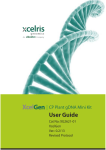
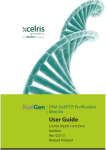
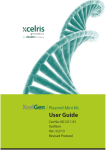
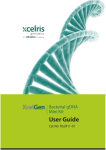
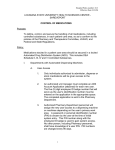
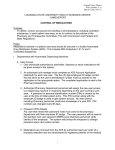
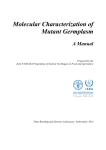
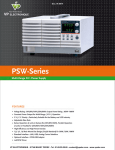
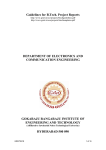

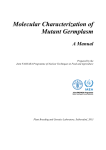
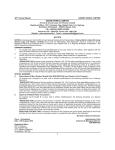
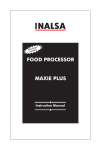
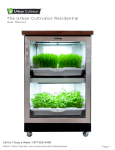
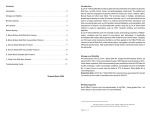
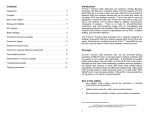
![Lvn De Novo Board Game User Manual [VER 1.0]](http://vs1.manualzilla.com/store/data/005785305_1-ef88b505e9e90be8a5d323ed52b38254-150x150.png)
